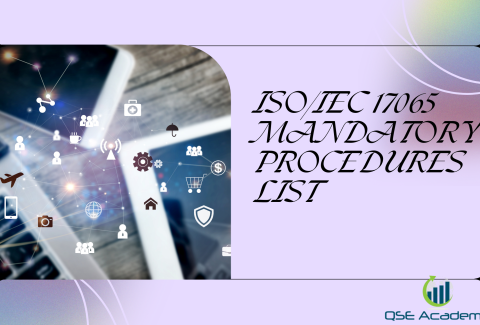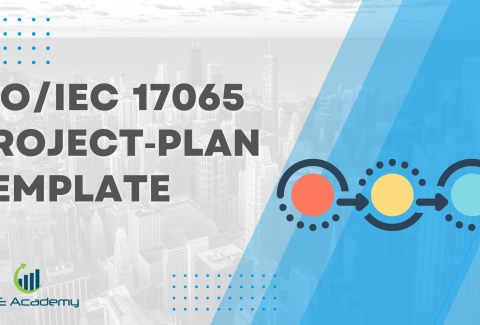ISO/IEC 17065 Implementation on an SME Budget
Proving That ISO/IEC 17065 Accreditation Isn’t Just for Big Players
If you’re a small or medium-sized certification body (CB), ISO/IEC 17065 accreditation can feel out of reach. You look at big agencies with entire compliance teams and think, “How can we afford that?”
Here’s the truth — you don’t need a huge budget or staff to build a compliant, efficient system. What you need is clarity, prioritization, and the right tools.
At QSE Academy, we’ve helped dozens of SMEs around the world achieve ISO/IEC 17065 accreditation without overspending. The secret lies in focusing on what matters most and cutting what doesn’t.
This guide walks you through exactly how to do that: understanding real costs, making smart investments, and using practical strategies to stay lean while still meeting every clause of the standard.
Understanding the Real Costs of ISO/IEC 17065 Implementation
Before anything else, you need to know where the money actually goes. Too many CBs start their journey blind — buying consulting hours, software, or training they don’t really need.
Here’s what your main cost categories look like:
- Accreditation body fees: application, assessment, and surveillance costs.
- Training: for your staff and key personnel involved in certification decisions.
- Documentation and system setup: creating procedures, templates, and records.
- Internal audits and pre-assessments: ensuring you’re ready for the formal evaluation.
Pro Tip: Build a simple cost-tracker spreadsheet. Categorize by “must-have” vs. “nice-to-have.” That single act helps you make smarter budget decisions.
Common Mistake: Outsourcing everything. You don’t need a consultant to write every document — with the right templates, you can handle much of it internally.
Example: A small product-certification body in Malaysia managed full ISO/IEC 17065 accreditation for under USD 9,000 by training one internal coordinator instead of hiring a consulting firm.
 Prioritize What Matters: Core ISO/IEC 17065 Requirements to Focus On
Prioritize What Matters: Core ISO/IEC 17065 Requirements to Focus On
When you’re working with limited resources, prioritization is everything. Some clauses are critical for compliance — others are about refinement.
Focus your energy (and your money) on these essentials:
Clause 4 – General Requirements:
Your foundation. Make sure impartiality, confidentiality, and legal liability are well documented and genuinely practiced.
Clause 5 – Structural Requirements:
Define your organizational chart and responsibilities clearly. Small teams can hold dual roles as long as impartiality is protected.
Clause 6 – Resource Requirements:
You don’t need to hire more staff — just prove your people are competent for the roles they perform.
Clause 7 – Process Requirements:
Simplify your certification process, but make sure each stage (application, review, decision, complaints) is traceable.
Clause 8 – Management System Requirements:
Keep your management system lean. Use cloud folders or shared drives for document control instead of expensive software.
Pro Tip: Write your procedures the way you actually work. Auditors want to see functioning systems, not fancy templates that don’t match reality.
Smart Cost-Saving Strategies for ISO/IEC 17065 Implementation
Here’s where smaller CBs can get creative — you can achieve compliance without unnecessary spending.
- Use pre-built templates: They save hundreds of hours and ensure clause alignment.
- Train internally: Nominate a “quality champion” who learns the standard and trains others.
- Go digital, not complex: Free tools like Google Drive or Notion can handle document control just fine.
- Collaborate: Share impartiality committees or technical experts with other small CBs.
- Choose remote audits when possible: Most accreditation bodies now accept virtual assessments.
Pro Tip: Keep one person as the project focal point. It keeps communication consistent and avoids paying for overlapping consultant hours.
Common Mistake: Over-engineering systems. Complexity doesn’t impress auditors — consistency does.
Phased Implementation: Building Your ISO/IEC 17065 System Step-by-Step
Implementing ISO/IEC 17065 doesn’t have to happen overnight. You can phase it in strategically — saving both time and money.
Month 1–2: Conduct a gap analysis using a structured checklist. Identify what you already have.
Month 3–4: Develop and customize your documentation.
Month 5: Train your staff and start using the new procedures.
Month 6: Conduct internal audits and management reviews.
Month 7: Apply for pre-assessment or full accreditation.
Example: One of our clients — a start-up certification body in Kenya — used this exact approach and achieved accreditation within seven months while staying under budget.
Pro Tip: Use free project-management tools like Trello or ClickUp to assign tasks and track progress. They’re perfect for small teams.
Leveraging Technology to Stay Compliant on a Budget
You don’t need expensive quality-management software. The right mix of simple digital tools can keep your system fully functional.
Here’s how:
- Document management: Cloud-based tools (Google Drive, OneDrive) for version control and secure access.
- Training tracking: Use Excel or Airtable to log training, competence, and expiry dates.
- Internal audits: Conduct using editable PDFs or online forms.
- Communication: Use Slack or Microsoft Teams for faster coordination between roles.
Pro Tip: Automate what you can — notifications for document reviews or corrective-action follow-ups.
Common Mistake: Investing in full QMS software before accreditation. Get accredited first, then scale your tech stack.
Funding, Partnerships, and External Support Options
Even with careful planning, you might still need help funding or accelerating implementation. The good news? Options exist.
- Government grants or SME funds: Many regions support quality or accreditation initiatives.
- Industry associations: Often host free or subsidized training sessions.
- Accreditation bodies: Some offer pre-assessment consultations or readiness checklists.
- Peer networks: Share resources and templates with other CBs working toward accreditation.
Pro Tip: If you’re part of a professional network, propose a shared training session — it reduces cost per participant.
Maintaining Compliance Efficiently After Accreditation
Once you’re accredited, the challenge becomes maintaining your system — affordably.
- Conduct smaller, more frequent internal reviews instead of one large annual audit.
- Reuse your templates for management reviews and corrective actions.
- Assign clear rotation of responsibilities so staff stay competent without hiring more people.
- Capture lessons learned after every audit — it’s free continual improvement.
Pro Tip: Track findings in one simple spreadsheet and color-code them (open, in progress, closed). It’s audit gold.
FAQs
Q1: How much does ISO/IEC 17065 accreditation cost for an SME?
Typically between USD 8 000 – 12 000, depending on the accreditation body and level of internal work done.
Q2: Can we implement ISO/IEC 17065 without hiring a consultant?
Absolutely. With guided documentation kits and mentoring, you can manage the project internally.
Q3: What’s a realistic timeline for small organizations?
Six to eight months is achievable if you dedicate a few hours each week to focused progress.
Conclusion: Accreditation Doesn’t Have to Break the Bank
Small certification bodies often underestimate their ability to implement ISO/IEC 17065 — but the truth is, SMEs are perfectly positioned to build lean, agile systems that pass accreditation with flying colors.
At QSE Academy, we’ve watched small teams achieve what large organizations struggle with — because they focus on essentials, not bureaucracy.
Next Step: Download QSE Academy’s ISO/IEC 17065 SME Implementation Kit and start your journey today. You’ll save money, time, and still meet every clause that matters.
Melissa Lavaro is a seasoned ISO consultant and an enthusiastic advocate for quality management standards. With a rich experience in conducting audits and providing consultancy services, Melissa specializes in helping organizations implement and adapt to ISO standards. Her passion for quality management is evident in her hands-on approach and deep understanding of the regulatory frameworks. Melissa’s expertise and energetic commitment make her a sought-after consultant, dedicated to elevating organizational compliance and performance through practical, insightful guidance.









